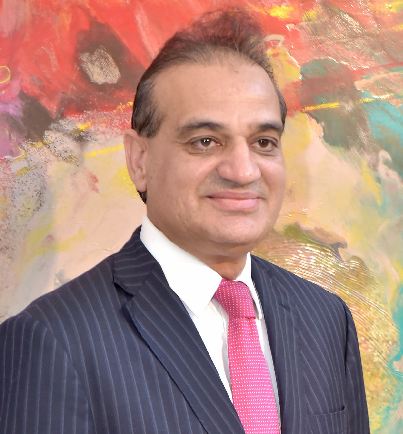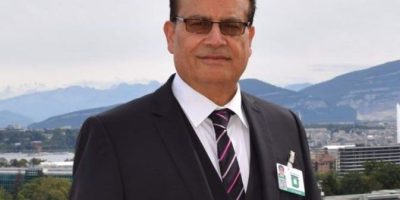Of disjointed and ‘compromised’ PTI leadership

Comment
Ansar Mahmood Bhatti
There is a saying that behind every successful man, there is a woman. However, in the case of Imran Khan, it appears the opposite might be true. It is widely believed that during his three and half year tenure as Prime Minister, his wife, Bushra Bibi, played a significant role in decision-making. Allegedly, under her influence, close associates such as Farah Gogi and others benefited immensely through questionable practices involving transfers, postings, land acquisitions, housing schemes, and more.
One prominent controversy linked to this dynamic is the Toshakhana case, which has landed the PTI founder in jail. Reports suggest that it was Bushra Bibi who insisted on retaining valuable gifts, including the high-profile watch gifted by Crown Prince Mohammed bin Salman, and later suggested selling it. This decision not only tarnished Imran Khan’s reputation but also provided the government with a strong basis to initiate legal action against the former prime minister.
The recent D-Chowk debacle is closely tied to Bushra’s intransigent stance. Despite clear instructions from Imran Khan to avoid the location, she insisted on marching towards D-Chowk. PTI leaders claim that Imran Khan had agreed to hold a sit-in at Sangjani, but Bushra reportedly compelled Ali Amin Gandapur to head to D-Chowk at all costs. What unfolded at D-Chowk is now part of history—tragically, numerous lives were lost on both sides, and many others suffered serious injuries. Notably, both Bushra and Gandapur managed to make a safe exit from the scene, leaving others to bear the consequences.
The statement highlights allegations and perceptions within Pakistan’s political landscape, particularly regarding the internal dynamics of Pakistan Tehreek-e-Insaf (PTI). It reflects a growing belief among certain PTI circles and political opponents that key figures such as Bushra Bibi, the wife of PTI Chairman Imran Khan, and Ali Amin Gandapur, a prominent party leader, are not independently influencing party decisions. Instead, they are accused of taking cues from entities or individuals outside the party’s formal hierarchy.
Interior Minister Mohsin Naqvi explicitly alleged that these figures are acting under the direction of so-called “hidden hands”—a term often used in Pakistan’s political lexicon to refer to unseen forces, frequently implying elements of the establishment or other influential actors operating behind the scenes. This rhetoric suggests a deep mistrust in PTI’s leadership autonomy, insinuating that the party is being manipulated to serve external agendas.
Naqvi’s remarks further frame Bushra and Gandapur as symbolic rather than substantive leaders, portraying them as “puppets” whose actions are controlled by these unseen forces. This perspective not only undermines the credibility of PTI’s internal decision-making but also casts doubts on the role of Imran Khan as the central figure of the party. It implies a dilution of his authority, raising questions about who truly holds power within the party and the motivations of those allegedly pulling the strings.
The broader implication of this narrative is the perception of political maneuvering by shadowy entities to destabilize or redirect PTI’s trajectory, potentially to align with their strategic interests. Such allegations, if unsubstantiated, may be viewed as politically motivated rhetoric aimed at discrediting PTI leadership during a period of heightened political tension. However, for PTI supporters, such claims are likely to be dismissed as part of a broader campaign to weaken the party’s position and its influence over its voter base.
The noticeable absence of PTI Chairman Barrister Gohar and Secretary General Salman Akram Raja from key protests, including the recent D-Chowk episode, raises questions about the leadership’s commitment to leading from the front during pivotal moments. Their absence is not just a matter of optics but one that directly impacts the morale and enthusiasm of party workers and supporters on the ground.
In any political movement, especially one reliant on mass mobilization, the visible presence of the top leadership is crucial. It not only energizes the participants but also sends a strong message of unity and resolve to opponents and onlookers. Without the leadership at the helm during such critical junctures, the movement risks appearing disorganized or lacking resolve.
The situation in Punjab further compounds these challenges. The provincial leadership, instead of effectively mobilizing supporters or presenting a robust challenge, opted to get arrested—a move that, while symbolically significant, failed to sustain the momentum or advance the party’s objectives. Arrests can serve as a political statement, but without strategic follow-through or visible leaders directing the narrative, they lose their impact and leave the movement floundering.
The government’s handling of the PTI protests has drawn widespread criticism, with many condemning the excessive use of force employed to suppress the dissent. This approach not only resulted in the tragic loss of numerous lives but also severely damaged the reputation of the country’s security forces, both domestically and on the global stage. The brutality witnessed during the crackdown on protesters has reinforced the narrative that coercive measures fail to address underlying political or social grievances, often exacerbating tensions instead of resolving them.
This situation raises a critical question: will the PTI step back and accept this suppression, or will the movement gain renewed momentum? Historical and cultural dynamics suggest that such repression is unlikely to subdue dissent entirely. In fact, it may fuel further resistance, particularly given the cultural ethos of Pashtoons, who have a deep-seated tradition of standing up against perceived injustices and “settling scores” when wronged. This could lead to an escalation in confrontations, making the political landscape increasingly volatile in the days ahead.
It is imperative for the government to reconsider its approach and prioritize dialogue and reconciliation over force. A failure to address the root causes of discontent risks deepening the divide, potentially pushing the country into further turmoil.
Whether one likes it or not, Pakistan Tehreek-e-Insaf (PTI) has established itself as a dominant political force with substantial support both domestically and internationally. Despite the challenges and controversies surrounding the party, recent events have seemingly bolstered its political standing and enhanced its public appeal. PTI’s ability to galvanize massive public support, even in difficult times, reflects its deep-rooted influence and connection with the masses.
Excluding PTI from the political landscape or decision-making process poses significant challenges for governance and policy implementation. The party’s influence is such that neglecting its role in national politics may lead to instability or difficulty in managing day-to-day state affairs effectively. It is in the best interest of the country for the decision-makers and the “powers-that-be” to acknowledge and engage with PTI constructively. A collaborative approach that includes PTI in the political framework would likely foster greater national harmony, ensuring political stability and progress. The sooner this reality is embraced, the better it will be for the country’s overall wellbeing and democratic health.
The writer is the newspaper editor
Related News

Trump Hailed as Peacemaker for Iran–Israel Ceasefire Deal
By Qamar Bashir In a stunning turn of events, President Donald J. Trump announced theRead More

The Iran War: US and Israel Face Global and Domestic Backlash
By Qamar Bashir On June 13, 2025, the world witnessed a dangerous escalation in theRead More


Comments are Closed